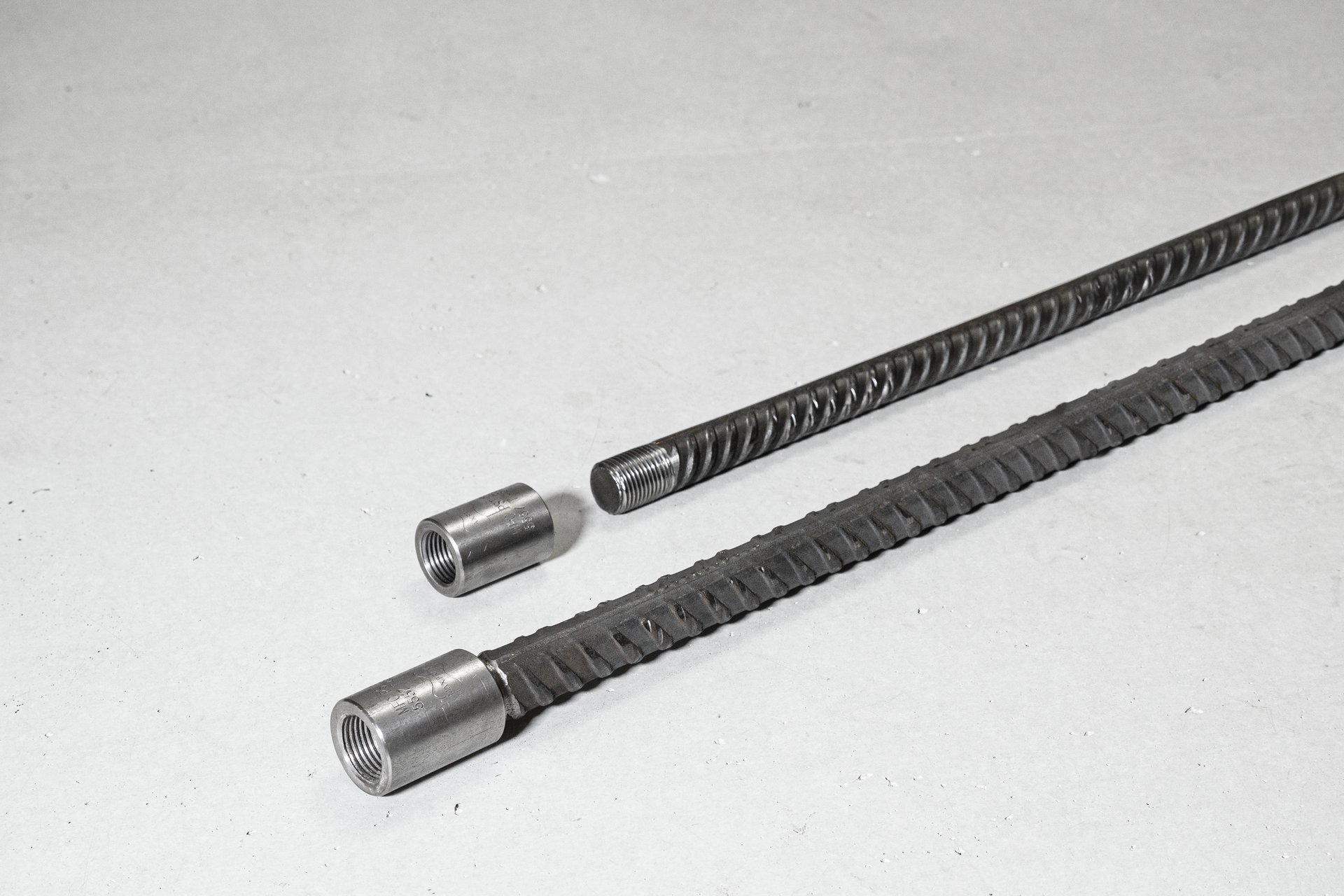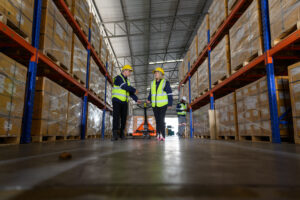Post-tensioning involves applying compressive forces to concrete elements after the concrete has hardened. Unlike traditional reinforcement that passively responds to tensile stresses, post-tensioning actively introduces beneficial compressive stresses that counteract external loading. Post-tensioning bars are high-strength threaded steel bars specifically designed for this purpose. The process typically involves:
- Placing bar ducts within concrete formwork before pouring
- Casting concrete around these ducts
- Allowing concrete to reach sufficient strength
- Installing high-strength bars through the ducts
- Anchoring one end of the bars
- Applying tension to the bars using hydraulic jacks
- Anchoring the tensioned end and grouting the ducts
This creates a compressed concrete element with significantly improved performance characteristics compared to conventionally reinforced concrete.
Crack mitigation and water resistance
Post-tensioning bars’ most substantial durability enhancement is their ability to minimize or eliminate cracking in concrete structures. Concrete naturally excels in compression but performs poorly under tension. When external loads create tensile stresses, conventional concrete typically develops cracks that compromise structural integrity and provide pathways for moisture and contaminants. Post-tensioning bars counter this fundamental weakness by:
- Introducing compressive stresses that must be overcome before any tensile stresses develop
- Ensuring concrete remains predominantly in compression under service loads
- Reducing crack width and frequency even under extreme loading conditions
- Creating a tighter concrete matrix that is less susceptible to water penetration
This crack resistance significantly enhances durability by preventing water ingress, the primary culprit in concrete deterioration through freeze-thaw cycles, corrosion of embedded metals, and chemical attacks.
Corrosion protection and system longevity
Post-tensioning bars incorporate sophisticated corrosion protection systems critical for long-term durability:
- Factory-applied epoxy coating or galvanization providing primary corrosion resistance
- Corrugated plastic or metal ducts create a physical barrier against environmental exposure
- High-quality cementitious or epoxy grout filling voids between bars and ducts
- Specialized end anchorages with protective caps and corrosion-inhibiting compounds
This multi-layered protection system shields the high-strength steel from moisture and aggressive chemicals, dramatically extending service life compared to conventional reinforcement. These protection systems have proven particularly valuable for maintaining structural integrity over decades in marine environments, industrial settings, or locations with high chloride exposure.
Enhanced fatigue resistance
Repetitive loading on structures, like bridges and industrial floors, causes fatigue stress. Post Tensioning Bars significantly improve fatigue performance through several mechanisms:
- Reducing stress ranges by maintaining compression in concrete elements
- Minimizing crack formation that would otherwise propagate under cyclic loading
- Providing more uniform stress distribution throughout structural members
- Creating higher resistance to stress reversals caused by dynamic loading
The fatigue life improvement is particularly pronounced in infrastructure applications where traffic volumes or machine operations create millions of loading cycles over a structure’s lifespan. Post-tensioning bars enable structures to maintain performance characteristics well beyond conventional design limits by preventing the incremental damage accumulation characteristic of fatigue failure.
Applications demonstrating durability improvements
Post-tensioning bars have proven their durability enhancement capabilities across diverse applications:
Bridge rehabilitation
Ageing bridges with deteriorating concrete have gained extended service life through post-tensioning bar systems that compress existing elements, close cracks, and restore load-carrying capacity without a complete replacement.
Ground anchors and soil retention
In geotechnical applications, post-tensioning bars create durable anchoring systems that stabilize slopes, secure retaining walls, and prevent foundation movement in challenging soil conditions. Their corrosion protection systems make them suitable for permanent installations in aggressive soils.
Nuclear containment structures
The exceptional durability requirements of nuclear facilities make post-tensioning bars ideal for containment vessels, providing reliable, long-term compression that maintains structural integrity and prevents radioactive material leakage under extreme conditions.
Post-tensioning bars represent a sophisticated engineering solution for enhancing structural durability across diverse applications. This system reduces crack formation, prevents corrosion, improves fatigue resistance, and extends structure service life under demanding environmental conditions. Reinforced concrete structures benefit from post-tensioning bars’ balance of performance, durability, and economics.








